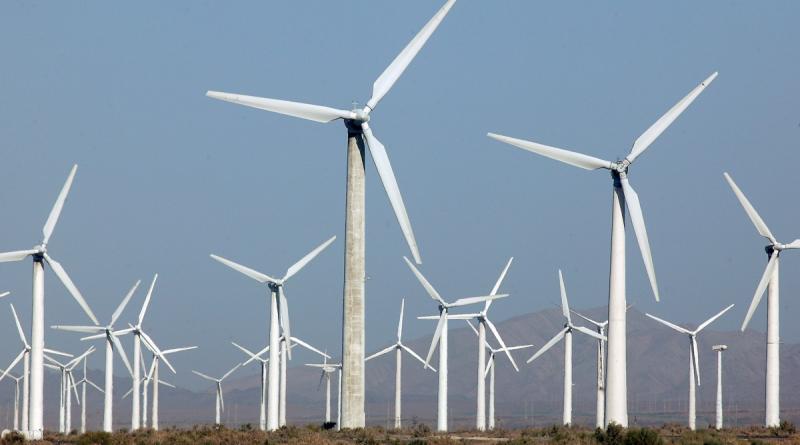The growing urgency of shifting to a low carbon economy.

We have just 10 years left to meet the 2030 Agenda and avert the worst effects of climate change. In many cases, the costs of ignoring the rules of science were laid bare by the coronavirus COVID-19 – and if climate change increases, the risk of future pandemics increases with it. Already, heatwaves are melting the permafrost covering the bodies of animals and humans buried by other deadly diseases, such as the plague and anthrax, with anthrax re-emerging in Siberia in recent years. So, as we recover from the COVID-19 pandemic, we must also heed the warnings of our warming world.
The most effective way to do this is to change our societies in ways which are compatible with the boundaries our planet has set.
The unprecedented global response to COVID-19 has already proven that this is possible.
We should not forget the lessons of this crisis, such as how remote working reduces the need for travel or assume that they only apply in a crisis. Such changes should come with further incentives for renewable investments.
Making energy greener could increase global GDP by US$98 trillion by 2050. Boosting investment in renewable energy would quadruple jobs to 42 million globally in the next 30 years, with healthcare savings eight times the cost of the investment. Six million jobs could be created by embracing the circular economy, where used goods are re-used, recycled and upcycled at greater value. While 1.2 billion jobs, 40 percent of all jobs on earth, depend on a healthy and stable environment.
China is at the forefront of solar technology and low-carbon transportation, including high-speed rail, bike-sharing, and electric vehicles. It has one-third of the world’s wind power, a quarter of its solar capacity, six of the top ten solar panel manufacturers and four of the top ten wind turbine makers. New renewable energy jobs in China now outnumber those created in oil and gas. In 2017 China invested more US$125 billion dollars in renewable energy, about 25 percent more than the previous year.
China also has the largest carbon trading market. As climate change will have implications for its domestic and international development, particularly in infrastructure, fully factoring in the impact of greenhouse gas emissions is now an essential responsibility.
Embracing new technology is key. China leads the world in bandwidth and has around 854 million internet users. According to WeBank, during the pandemic people grew more positive about online working and learning, up by 537 percent and 169 percent respectively. Remote work and automation allowed nearly 60 percent of businesses to resume work after about a month of lockdown.
It’s important for China to resist reverting to fossil fuels. It can transition to a green economy that maintains growth by continuing to develop low-carbon infrastructure. With oil prices reaching record lows, China and other countries have an optimal opportunity to protect the competitiveness of renewables by raising carbon taxes.
As the agency that leads the UN’s socio-economic response to COVID-19, UNDP must encourage the transition to a green economy. Low-carbon infrastructure requires private and public resources that UNDP can mobilize.
UNDP recently launched an SDG Financing Platform in China. It brings together regulators, academics, business representatives, investors, and social organizations to make impact-oriented investment and sustainable financing more attractive to investors and those who benefit from it.
UNDP has also been working to support China’s low-carbon transformation. This has included assisting China in establishing its emissions trading system, as well as helping to increase energy efficiency in the motor, lighting, and logistic industries. UNDP has promoted hydrogen-based clean energy and is supporting the development and commercialization of hydrogen fuel cell vehicles.
The digital divide is particularly pronounced in China. In cities up to 71 percent have the internet, while that in rural areas is only 35.4 percent. Such inequalities will prevent many from enjoying the long-term benefits of a green economy, regardless of the promise of slowing climate change or creating new jobs. The digitalization of economies will create new opportunities; it will also transform jobs.
While many businesses suffered from the crisis at its peak, others were also able to rely on remote work to keep going, while consumers turned to online services, which bolstered local economies. A marked improvement was also recorded in air quality. China recorded more than a 25 percent reduction in CO2 emissions compared to the same time in 2019. As the economy opens and industries and transport return to pre-COVID levels, high levels of air pollution can return. Clean energy and transportation are key to avoiding this.
COVID-19 has brought people together in a way that no amount of advocacy or awareness raising could. We now have a shared understanding that will make it easier to take the right action; no one wants to experience this type of crisis again.
The last few months may have offered a preview of how a green economy can work,. In the post-COVID-19 world, a green economy must shift from being a side-effect to an objective in and of itself, for China and the world. As we build back from COVID-19, climate change must be at the centre of our recovery. The time to act and safeguard life on earth is now.
29 May 2020
UNDP



